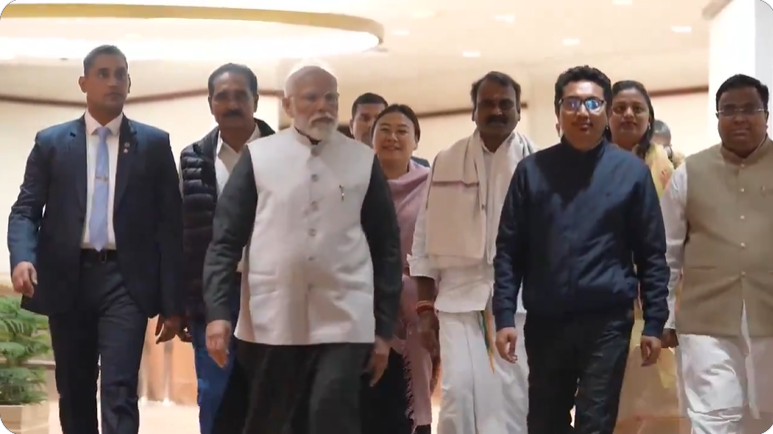GT News Service
Leh, March 29
As the preparations for the general elections move forward after the issuance of notification for the second phase, all eyes are on the single parliamentary seat of Ladakh. The BJP has been gaining strength in this area, which was previously dominated by the Congress or the National Conference.
In the 2014 elections, the BJP made history when Thupstan Chhewang, a seasoned Ladakh politician, won the seat by just 36 votes. He had also won here in 2004 as an independent.
In 2019, Jamyang Tsering Namgyal of the BJP won with a large lead of 10,930 votes against a joint candidate from the National Conference, PDP, and Islamiya School Kargil, named Sajjad Kargili. Namgyal received 42,914 votes to Kargili’s 31,984.
Two other candidates, Haji Asgar Karbalaie, an ex-Congress MLA, and Rigzin Spalbar of the Congress, came in third and fourth. Karbalaie ran as an independent.
The big question is whether the BJP can win this seat for the third time in a row.
This seat is crucial for the BJP as the election results will reflect public opinion on their decision to remove Article 370 and make Ladakh a Union Territory, separating it from Jammu and Kashmir.
The BJP is being careful and hasn’t yet announced if Jamyang Tsering Namgyal will run again, unlike in other areas of the former state of Jammu and Kashmir where they have kept the same candidates.
The 2014 elections were a turning point for the BJP as they won the Ladakh seat for the first time.
The political landscape in Ladakh has undergone significant changes over time.
- Historical Shifts: Ladakh was once part of the princely state of Jammu and Kashmir before the Dogra–Tibetan War. After 1947, it continued to be part of the Indian state of Jammu and Kashmir
Demand for Autonomy: There has been a longstanding demand for greater autonomy. The Ladakh Union Territory Front, for instance, advocated for Ladakh to be a separate Union territory.
Article 370 and Union Territory Status: In August 2019, the Indian government revoked the special status granted to Kashmir under Article 370 and bifurcated it into two Union Territories: Jammu and Kashmir, and Ladakh. This move was initially met with approval in Ladakh, especially in the regional capital, Leh.
Current Concerns: More recently, there have been protests in Ladakh against the central government. Residents fear the loss of their tribal identity and democratic rights due to the direct administration from New Delhi. They are concerned about their lack of representation in political decisions and the impact of new laws that allow outsiders to settle and start businesses in the region.
Environmental and Cultural Preservation: The local population is also worried about the militarization and ecological sensitivity of the region, which is experiencing the effects of the global climate crisis. - Autonomous Hill Development Councils: Two autonomous bodies formed in the mid-1990s and early 2000s for self-governance in Leh and Kargil have been stripped of much of their powers.
These changes reflect a complex interplay of regional aspirations, national politics, and global environmental concerns, shaping the unique political landscape of Ladakh.






